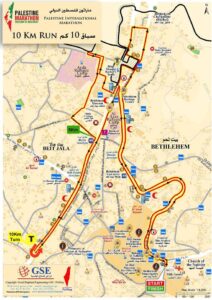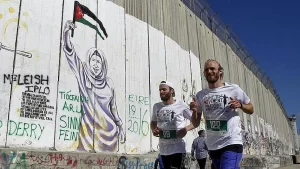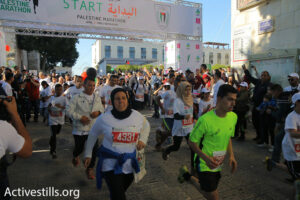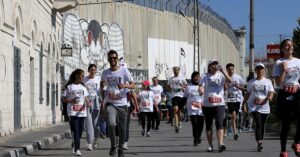Image Source: Al Jazeera
Palestine – One prominent aspect, and a deeply rooted issue in Israel’s treatment of Palestinians, involves the extensive restrictions on their movement. Both within and outside their occupied territories.
These constraints are imposed by the military and encompass numerous checkpoints, curfews, roadblocks, barriers, and a separation wall, effectively segregating civilian Palestinians from each other. Consequently, these measures severely impede their ability to lead everyday lives, making routine activities exceedingly challenging, if not impossible.
The severity of these movement constraints varies across Palestinian territories, with Gaza experiencing the most severe restrictions. This further exacerbates their difficulties in accessing essential services and engaging in communal activities such as work, education, visiting family or friends, and seeking healthcare. Under these circumstances, the journey back home becomes even more arduous.
Against the backdrop of these human rights violations, Palestinian athletes, particularly marathon runners, have found a means of protest by organising the annual Palestinian Marathon in the occupied West Bank.
More than a decade ago, a coalition of Palestinian activists and their international allies launched the Right to Movement campaign.
Diala Isid, a Palestinian activist and runner, explained that the initiative aims to utilise marathon running to shed light on the realities Palestinians face in the occupied territories while fostering international solidarity with their cause.
“We had some international support from Danish volunteers. They were with us from the start, helping us and making this marathon a reality. We had so many International people coming to run, and by running the marathon, you see the reality of how Palestinians live every day without even thinking about it because running is a language and it’s easy to get through to people.”
She explained that the marathon adheres to international standards, attaining official recognition. According to these standards, the designated course must measure 42 kilometres (km).
Initially, meeting this requirement posed a challenge as no area in Area A of the occupied West Bank fulfilled this criterion. However, participants decided to circumnavigate the course four times, covering roughly 10.5km each lap around Bethlehem City to complete the race.

Commencing at the Nativity Church and progressing towards Jerusalem, the marathon route traverses two refugee camps. It runs alongside the separation wall, where participants encounter Israeli checkpoints.

Two men running along the wall. Image Source: Anadolu Agency
Diala noted that during the event’s development, they realised that the marathon was more than another sporting event. It narrated a tragic tale of the struggles and hardships endured by Palestinians.
In addition to symbolising solidarity and serving as a peaceful form of protest, she emphasised that the marathon fosters unity and connections among Palestinians across different territories despite Israel’s efforts to enforce apartheid policies.
The marathon has left a profound impact on both domestic and international participants, exposing them firsthand to Palestinian culture and the harsh realities of the occupation.
“The first marathon, we had only 600 Runners, half of them were Palestinians and half of them were International, but then it grew to nearly 10,000. When people think about coming to run a marathon in Palestine, they know that it’s not a normal Marathon, but after running it, any kind of sympathy they had for Israelis changes. It changes the narrative of what the international community thinks about Palestine and the Palestinians and… Though we are under so many restrictions. We have lived under occupation for over 75 years and still want to spread hope. We still want to do something positive for the community and Palestine.”
Palestinian Running Groups
As a result of the initiative and the marathon, numerous running groups have emerged throughout the occupied territories. Their courage in advocating for their right to freedom of movement directly challenges Israel’s oppressive laws.
Moreover, these efforts aim to empower Palestinians, particularly women who have faced unimaginable hardships at the hands of Israeli forces, to assert themselves as active participants and leaders in their own right.

Runners at the starting line. Image Source: +972 Magazine
Jala Khater, a Palestinian writer, social commentator, and runner from Jerusalem, emphasised that all they are doing is exercising their fundamental human rights to move freely despite the obstacles and risks imposed by the Israeli regime.
He views running as a vehicle for fostering solidarity and demonstrating to all those in occupied Palestine that they are not alone in enduring the challenges of occupation, violence, detention, and displacement.
“The purpose is to highlight and raise awareness about the forced evictions that are taking place in both [West Bank and East Jerusalem] neighbourhoods, connecting the struggle and making people feel that we are present and there to support them. Of course, this idea of running is seen as a form of protest and a form of raising awareness about political issues, and the Israelis don’t like it.”
Despite being a peaceful form of protest, Israeli forces persist in using force against runners. While the marathon may seem safe, the presence of these forces introduces an element of precarity to its peaceful nature.
Challenges on Attending International Events
As the entire Palestinian territory is under Israeli occupation and control, without an official permit from Israeli authorities, Palestinians are unable to leave any occupied territory or the country. Consequently, when Palestinian athletes receive invitations to compete or participate in tournaments and competitions abroad, their travel to and from the country is far from straightforward.

Runners making their way. Image Source: Al Monitor
Jalal highlighted the issuance of visas and permits as one of the numerous challenges faced by Palestinians. Reflecting on an incident, he recounted how athletes travelling abroad for competitions were prohibited from travelling as a group, underscoring the obstacles they encountered.
“I think the most difficult part was departing from Palestine. Some members of the team had to go through the land crossing to Jordan, and other members of the team had to go through the airport in Tel Aviv. But it depends on where you live and what kind of passport you hold. We cannot travel as a group at all together. But once we cross this first obstacle, which is leaving Palestine and meeting abroad, things become a little bit easier for us. It’s always a challenge for us to participate in global competitions. However, as always, we don’t give up and want to do more.”
While travelling outside of occupied Palestine may pose challenges, Diala asserts that organising running groups within the occupied territories can be equally daunting.
She explained that arranging local events or simply going for an evening run with fellow residents of the West Bank or Gaza is prohibited. Gaza, in particular, is effectively isolated from the rest of Palestine, making it nearly impossible for civilians to exit the country, let alone their enclave.
“In Palestine itself, the people from Gaza, we tried so many times to get them to come to the West Bank to participate in the marathon or just to participate in some of the activities we do with the Right to Movement, like local runs or weekly runs. We haven’t managed to get them from Gaza to the West Bank, and of course also, we were never able to go to Gaza from the West Bank to meet them. We had a small running group in Gaza, and they were very hopeful that we could meet and be just like normal nations around the world. Palestinians ran together or did some activities together, but we were not able to do that at all.”
